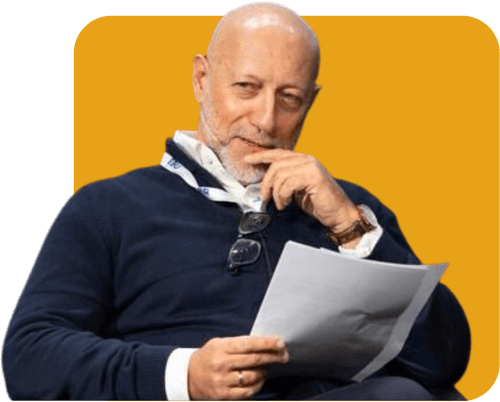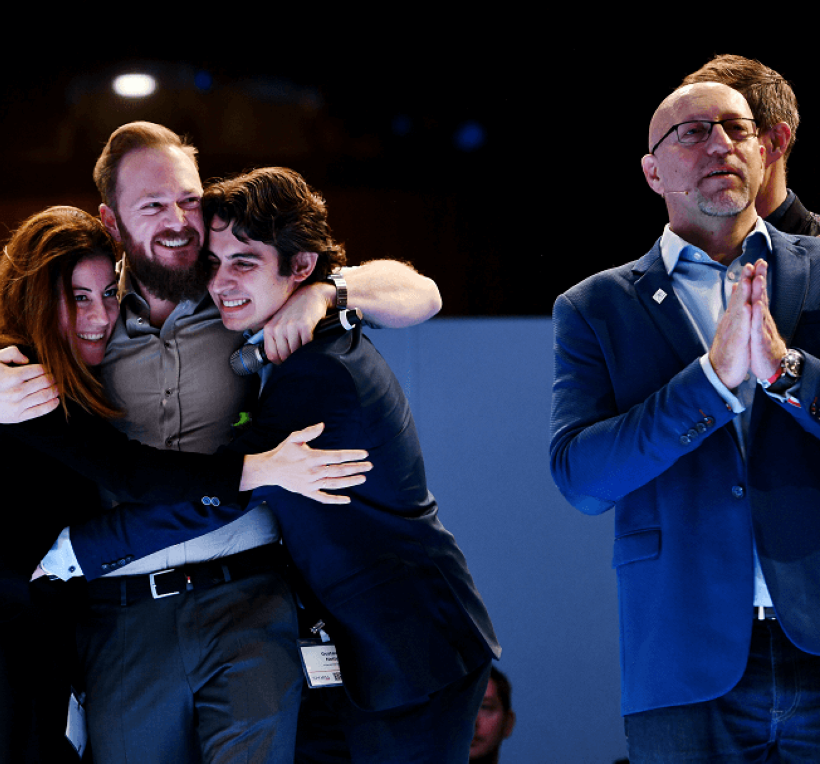

Forget AI Tools. Start imagining.
3 Min Read
Forget AI Tools. Start imagining.
“Strategic Intent” 2025: The Mindset That Separates Winners from Watchers
It All Started with a Pair of Football Shoes
I was eight years old.
A kid with ADHD. Often lost in class, never quite fitting in.
But in my mind? I was already on the pitch. The crowd cheering. Football shoes laced. Game on.
One afternoon, I went with my grandfather to watch a football match.
But I didn’t just go. I wore my football shoes because the night before, I had imagined myself playing in the game. The match ended 0–0. I never stepped on the pitch.
But in my mind, I had played every minute.
That wasn’t just fantasy.
Today I know what it was: Strategic Intent.
Not a business plan. Not a five-year roadmap.
But a powerful internal vision, one that pulls you forward even when the path is unclear.

What Is Strategic Intent?
Back In 1989, Gary Hamel and C.K. Prahalad published one of the most groundbreaking management articles in Harvard Business Review: Strategic Intent
They argued that most strategies are rooted in the past.
They start with what the organization already has resources, capabilities, structures, and habits.
But real leadership starts with imagination.
Strategic Intent is about:
- Declaring a goal that feels impossible today
- Creating a deliberate gap between what is and what should be
- Mobilizing the entire system to close that gap
- Using innovation, short-term wins, and storytelling to keep the mission alive
Their challenge to leaders was bold: “Be unreasonable. Then build the system that makes it possible.”
Why It Mattered Then and Why It’s Critical Now
In the 1980s, strategy was all about fit: Fit to market. Fit to budget. Fit to limitations.
Hamel and Prahalad flipped the model: Don’t adapt to the system. Redesign it.
They showcased how bold vision could beat incumbents.
Like how Honda started with small engines and scooters and still dared to say:
“We’re going to beat Benz.”
Strategic Intent in the Age of AI
For years, AI has been treated like just another tool.
It’s time to see it for what it really is: A new engine for Strategic Intent.
Especially in sports where untapped data, deep fan culture, and innovation potential collide.
This isn’t about “AI adoption.” It’s about redesigning what’s possible across fans, athletes, revenue, and operations.
Imagine This:
“By 2027, we will become the first sports organization where every fan interaction from ticket to content to merchandise is personalized in real time using AI.”
This isn’t about digitizing what already exists. It’s about reimagining the entire fan journey from the moment they open an app, enter the stadium, or click ‘buy’and delivering a seamless, intelligent, emotionally resonant experience at every step.
That’s not just optimization. That’s Strategic Intent in action.
What Does Strategic Intent Look Like in Practice?
1. Long-Term Strategic Intent
Become a next-generation sports organization that leads in fan experience, player performance, and monetization, all powered by AI.
2. Mid-Term Challenges (12-24 Months)
- Launch an AI-driven injury prediction system
- Build a dynamic personalization engine for fan commerce
- Unify all club data (medical, ticketing, media, performance) into one real-time data lake
In a recent project with a European club, through our AI Revenue Lab, we built an internal unit focused on unlocking new AI-driven revenue.
We tapped into underused data like stadium Wi-Fi, cameras, and CRM turning it into predictive fan insights and smarter sponsorship strategies.
The outcome? Less guessing. More forecasting. A revenue model driven by data, not intuition.
3. Short-Term Game-Changers
- Train customer service teams using LLMs
- Pilot AI to detect live fan engagement patterns
- Host an AI startup showcase focused on ROI-ready solutions
1. Define Your Strategic Intent Vision
What Should Sports Leaders Do Now?
Start with imagination. Ask: “What bold, long-term future do we want to create, even if it feels impossible today?”
Use the original Strategic Intent framework:
- Stretch: Set a goal that exceeds your current capabilities
- Focus: Align the entire organization around this north star
- Leverage: Use what you already have – brand, data, access – in smarter ways
- Engage Emotionally: Tell the story. Build belief. Make it real.
Once you define the vision, everything else becomes strategy.
2. Map 12-18 Month Intermediate Challenges
Break the big vision into tangible, testable missions.
3. Find Your “Loose Bricks”
Identify overlooked opportunities in markets, segments, or data sources where you can disrupt first.
4. Forge Smart Alliances
Partner smart: federations, tech hubs, Experts. Speed wins.
5. Make It Organizational, Not Technical
This isn’t a CTO initiative. It’s a shift in mindset across marketing, medical, ops, and leadership.
What Strategic Intent Really Means, A Personal Note
When I was 16, my father sold his stake in a successful company to fund his new venture. The venture failed. And we lost almost everything.
It was a tough chapter. And I made myself a promise: “I’ll succeed, and I’ll help my family bounce back.” I had a vision in my head. I could see myself in London, building a company, selling it, rewriting our story.
And years later, standing on Holborn Street, right outside Barclays Bank, I got the call:
The company was sold. Not for hundreds of millions but enough to breathe, to give back, to close the loop.
I raised my hands to the sky in the middle of the street.
Because that eight-year-old dreamer and that sixteen-year-old son had arrived.
That’s what Strategic Intent is. A vision so vivid, so emotionally anchored, that you live it before it happens. And then you build the system to make it real.

Final Word: Start with “Intent” Not with Tech
Everyone’s talking about AI. But as Strategic Intent taught us and as I’ve lived, Tools don’t lead. Intent does.
Be bold enough to imagine a future that doesn’t exist. Be brave enough to declare it.
And be disciplined enough to build the system that brings it to life.
The winners of 2025 won’t be the clubs, leagues, or brands that “fit the strategy.”
They’ll be the ones who created one and then reshaped everything around it.
The winners of 2025 won’t be the clubs, leagues, or brands that “fit the strategy.”
They’ll be the ones who created one and then reshaped everything around it.
The question isn’t whether you’ll use AI.
The question is whether you’ll use it to fit into the existing game – or to create an entirely new one.
With love for Sports and Innovation
AR




Comments